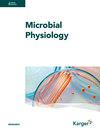Bacterial Diversity and Community Structure of the Jujube Rhizosphere in Southern Xinjiang Uygur Autonomous Region, China
IF 1.2
4区 生物学
Q2 BIOTECHNOLOGY & APPLIED MICROBIOLOGY
引用次数: 1
Abstract
Jujube is an important economic crop in the Xinjiang Uygur Autonomous Region. Microbial diversity in the rhizosphere is essential for plant quality; however, soil bacterial diversity and community structure in the jujube rhizosphere have not been characterized in this region. In this study, we used pyrosequencing to analyze bacterial diversity and community structure at different growth stages in the jujube rhizosphere in Hetian, Kashi, and Aksu prefectures. These results revealed a greater bacterial diversity in the 8-year jujube rhizosphere as compared with the 3-year-old rhizosphere taken from the same sampling area. Moreover, samples obtained from Kashi prefecture showed the largest diversity among the different areas. The most abundant phyla across all soil samples were Proteobacteria, Actinobacteria, Acidobacteria, Bacteroidetes, and Firmicutes. Dominant phyla in the 8-year jujube rhizosphere accounted for the increased observed diversity. Furthermore, comparative analysis of the bacterial communities with respect to rhizosphere age and sampling areas revealed a significant correlation between soil properties and phyla diversity. To the best of our knowledge, this is the first study of jujube rhizosphere bacterial diversity and community structure in the southern Xinjiang Uygur Autonomous Region, and we hope that our research provides a reference for future studies.新疆南疆大枣根际细菌多样性及群落结构
大枣是新疆维吾尔自治区重要的经济作物。根际微生物多样性对植物质量至关重要;然而,该地区红枣根际土壤细菌多样性和群落结构尚未得到表征。在本研究中,我们使用焦磷酸测序法分析了和田、喀什和阿克苏地区红枣根际不同生长阶段的细菌多样性和群落结构。这些结果表明,与同一采样区的3年生根际相比,8年生红枣根际的细菌多样性更大。此外,从喀什地区获得的样本在不同地区之间表现出最大的多样性。所有土壤样本中最丰富的门是变形菌门、放线菌门、酸杆菌门、拟杆菌门和厚壁菌门。8年生红枣根际的优势门是观察到的多样性增加的原因。此外,对细菌群落与根际年龄和采样面积的比较分析表明,土壤性质和门的多样性之间存在显著相关性。据我们所知,这是对南疆维吾尔自治区红枣根际细菌多样性和群落结构的首次研究,希望我们的研究能为未来的研究提供参考。
本文章由计算机程序翻译,如有差异,请以英文原文为准。
求助全文
约1分钟内获得全文
求助全文

 求助内容:
求助内容: 应助结果提醒方式:
应助结果提醒方式:


